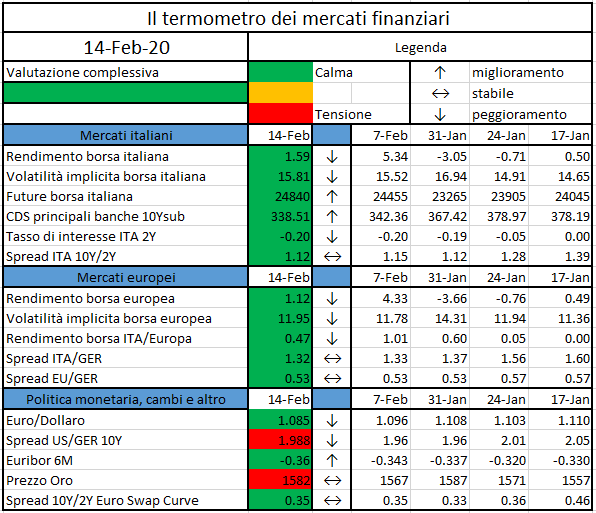
In the last six months I had to professionally deal with (and reject) a couple of cases. Potential customers wanted to build cryptocurrency-like systems disconnected from a least compliance with the regulatory reality. The belief that Internet can legitimize any alternative operation is rooted in the brainiac creators. Let’s be clear: financial technology is necessary and should not be prohibited on principle, just as cryptocurrencies – most of them, as today shaped, financial products and not just payment tools – are not the evil: traditional finance showed us worse. But do-it-yourself fintech crafts(wo)men claim to deal with finance without knowing it. Surfing Internet is enough to notice that there is a lot of platforms where you can buy credits or place securities in legal currency but outside the regulatory frameworks: a phenomenon towards which supervisors should better focus their efforts (see below). What is most upsetting is the attitude of smuggling as an inclusive instrument which, in the state of the art and of the monetary daily life, could instead entail a heavy regression of the very modest and very precarious well-being of much of the world.
A recent essay by a keen economist (M. Minenna, Il sistema finanziario del futuro: a chi servono le valute digitali di stato?, Diritto degli Affari, 3/19, 137) offers unexpected perspectives for reflection together with data from unsuspected sources (IMF, Global Findex Database). To counteract the private cryptocurrency practice and prevent its most feared degeneration (wild disintermediation, anonymity and spread of new cash), many central banks are fervent working in order to conceive legal tender state coins (Central Bank Digital Money – Cbdc), unlike the cryptocurrency which, by definition, is the opposite of a fiat currency. Everything then goes down in the mantra of cashless, of the world without cash; mantra on which the ECB itself, through its new president Christine Lagarde, invited more caution. A quick look at the aforesaid paper shows a state of affairs far removed from the utopian horizon on which fintech and its deviant inclusive ambition are running. China, India and Indonesia, i.e. 40% of the world’s population, reveal respectively 12%, 21% and 6% of unbanked people. In the Middle East and North Africa, the percentage rises to 86%. Opening a bank account requires an identity document, which about 1.5 billion Africans and Asians are missing, without taking into account digital connection problems and financial illiteracy. Meanwhile, cash continues to dominate payment systems: in India, between 2006 and 2015, banknotes increased by 14% per year, in Kenya 98% of payments are made in cash. More generally, wages and salaries are still being paid in cash in around 31% of the world. The acclaimed technological disruption that would bring to the cashless world at a glance, as today happens in Sweden, far from implementing financial inclusion, would aggravate the already heavy conditions of impoverishment and socio-economic malaise of a substantial portion of the world population.
The consequences, however, go far beyond the worrying stage highlighted in the quoted paper. A total monetary digitalization would also affect fundamental human freedoms (individuals who lawfully wanted to disappear from their usual life could no longer do so), would cause a heavy mix of payment, digital data processing and more or less (perhaps more than less) forced commercial profiling in spite of any ridiculous consensus rule, would increase the risks of theft of digital identities that could entail the instant plundering of entire financial assets. The ban of cash, seen so far as the strongest weapon in the fight against money laundering, could paradoxically weaken it. There is no absolutely inviolable or unavoidable computer system, so criminal hacking, by refining its methods of break-in and updating them to the sophistication of legal exchange schemes, would make recycling operations even more opaque and elusive.
How can we get out of it? How can we get out of it in a rational, non-regressive or repressive way, but above all not in a way jeopardizing the stability of payment systems and the trade safety?
The fledgling CBDC is not a solution, it’s
simply a reaction which risks overlooking the side effects of an equal and
opposite disruptive mechanism. A possible solution goes through three
directions.
Firstly, it is mandatory
to stem those phenomena of fintech which currently are clearly breaching the
rules: we need to overcome the ideological barrier for which the network is
a parallel reality where everything is allowed. In this connection, the Consob
document of January 2, 2020 with which the Commission takes a position on cryptoassets,
assuming a lighter discipline on hybrid cryptoassets which de facto
include a financial component, deserves serious rethinking. This applies to
certain cryptocurrency schemes as well as to platforms for the exchange of
traditional instruments which, at present, seem completely out of control. Being
too much benevolent in cases deemed as marginal for now is not a good start, on
the contrary it becomes a difficult precedent to defuse.
Secondly, the world authorities should draw up an agenda for the progression of the financial-technological evolution, by measuring the economic and social impacts of sudden alternative forms of exchange and preparing instruments able to curb them, preventing the excitement of the disruption from generating overall outcomes worse than those on which traditional systems lie (in this context, it should be welcomed the recent paper of Italian Ministry of Economics and Finances aimed at collecting opinions of the relevant stakeholders about the experimental project of softly ruling certain fintech phenomena).
Thirdly, the regulatory plan and the surveillance action cannot neglect also the risk of producing, thanks to unreasonable differentiated rulings, negative effects of disparity such as to alter the competition in the market of monetary and financial brokering. Despite all its defeats, the traditional system remains an inalienable bulwark of guarantee for savers, investors and economies worldwide: ratifying a parallel system with a lower control standing would end up pushing operators towards deregulated models that would reopen the passage to bubbles, dull violations of sad and recent memory.
Financial technology must make the current mechanism more efficient, not allowing its uncontrolled libertarianism. Disruption rhymes with, but does not equate to, destruction.






